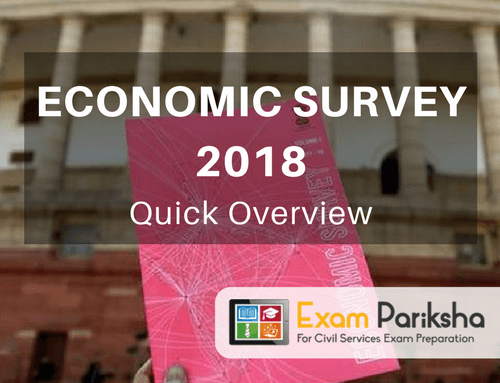Agriculture is an economic activity which requires a significant part of the costs to be incurred upfront without creativity 0f outcome. With the rise in droughts and floods due to climate change, agriculture has become more vulnerable. It is necessary to protect the farmer and ensure their credit eligibility for next season. For this purpose, GOI introduced many agriculture insurance schemes throughout the country.
Why is there an Agrarian Crisis in India
One farmer committing suicide every half an hour in the country, the number of farmers who have ended their lives as per official records in India is estimated at over 3 lakh in the past two decades. This doesn’t even cover agrarian labourers. With our half of country dependent on agriculture for a livelihood, these suicides constitute an agrarian crisis in India.
Fundamentally, agriculture requires a huge quantum of input and yet the value of output is affected by factors that are largely out of control of farmers.
The proximate reason for farmer suicide is the inability to pay back the loan taken at the beginning of the cycle if the crop fails.
Endemic Risks in Farming :
The agrarian crisis in India is aggravated by the presence of risk factors inherently associated with farming. These endemic risks in agriculture as an economic activity are –
- Weather pattern: extreme incidences of scant or excess rainfall, uneven distribution of rains, etc.
- Global Factors: Supply – Demand determined price situation and,
- Exchange rates of currency which determine the yield prices farmers get in the market
- Perpetuity: Unlike other economic activities, farming does not stabilise over time. A farmer is constantly exposed to the same endemic risks in every cycle.
Reasons for Agrarian Crisis In India :
- Rising input cost
- Non – availability of key resources such as water for irrigation
- Prices volatility of produce
- Inadequate knowledge of modern developments in method of farming
- Changing and inimical policy of regimes
- Worsening exchange terms
So, What can help our farmers – Crop insurance could mitigate the crisis.

What is Crop Insurance?
Crop Insurance refers to insurance services brought by producers associated with farming, against loss or damage to growing crops due to natural or man-made hazards. These damages can be due to natural disasters such as drought, hail, floods, or either due to decline in prices of the agriculture commodity.
The following core schemes are offered to Indian farmers:
- Pradhan Mantri Fasal Bima Yojana (new)
- National Crop Insurance Programme (NCIP) / Rashtriya Fasal Bima Karyakram (RFBK)
CAG report on Agriculture insurance in IndiaRecent CAG audit report of centre’s crop insurance schemes has highlighted gaps in their implementation. Two schemes that were audited: From Kharif 2011 to Rabi 2015-16
The present Pradhan Mantri Fasal Bima Yojana has not been scrutinised by the CAG. It came in Kharif 2016.
|
Problems highlighted by CAG in Agri-insurance in India :
|
Challenges to Crop Insurance in India-
- Restricted Fund Allocation: Reluctance of govt. to allocate adequate funds for providing subsidy required to support crop insurance especially problematic when centre and state have to agree on a subsidy sharing formula.
- Delays in payments of compensation arising from bureaucratic hurdles in damage assessment and disbursal of compensation.
- The inadequacy of amount of compensation in case of crop failure.
- Lack of average awareness about crop insurance is low & hence the usage of crop insurance is also very low. This is despite 4 decades of dissemination by govt.
- Adverse selection: Claims payout has exceeded the premiums collected by a wide margin at the aggregate level. This suggests adverse selection; crop insurance is being availed of only by farmers aware their crops are likely to fail.
- Lack of Technology usage: Even though PMFBY mandates the use of technology but there is a lack of infrastructure
Measures needed to ensure the success of Crop Insurance in India:
- Ensure social audit
- Utilise technology by digital money transfer to beneficiaries
- Promote private sector participation in crop insurance segment like being done in Spain and Mexico, where government oversees agriculture insurance by private players
- Cross check by various authorities and stakeholders
- Consolidation of schemes
- Increase in awareness of maximum number of people about agri-insurance
Using Technology in Crop Insurance for Benefit of Farmers
- Data collection and Monitoring: Using satellite, drones, etc. accurate and prompt data collection can be collected for providing insurance in various regions.
- Accurate forecasting: Weather forecasting using satellite imagery and advanced computer generated models can provide better and fast early warning to reduce losses.
- IOT (Internet Of Things): Dispensing easy availability of internet to farmers will allow farmers to learn and implement new technology. Such as using Soil sensors that can broadcast real-time data about the state of the soil.
- Improvement in Financial Services: Digitization of primary agriculture credit societies (PACs) and connecting them to district banks will allow easy loan and insurance disbursal. This will reduce exclusion as well as the delay in payments.
These revision notes have tried to cover the important issues of agriculture in India with respect to fodder for UPSC Civil Service Mains Exam as well as for revision and understanding useful in IAS / IFS Prelims. We nudge our readers to attempt the following question in 200 words for practice purpose after reading this revision study material.
Ques 1. Why has crop insurance failed to provide much-needed relief to farmers from destitution in India? Examine.
Ques 2. Critically Examine the working of various crop insurance schemes.
Ques 3. How has a state of agrarian crisis fallen upon the country’s farmer despite the successes of Green Revolution?





